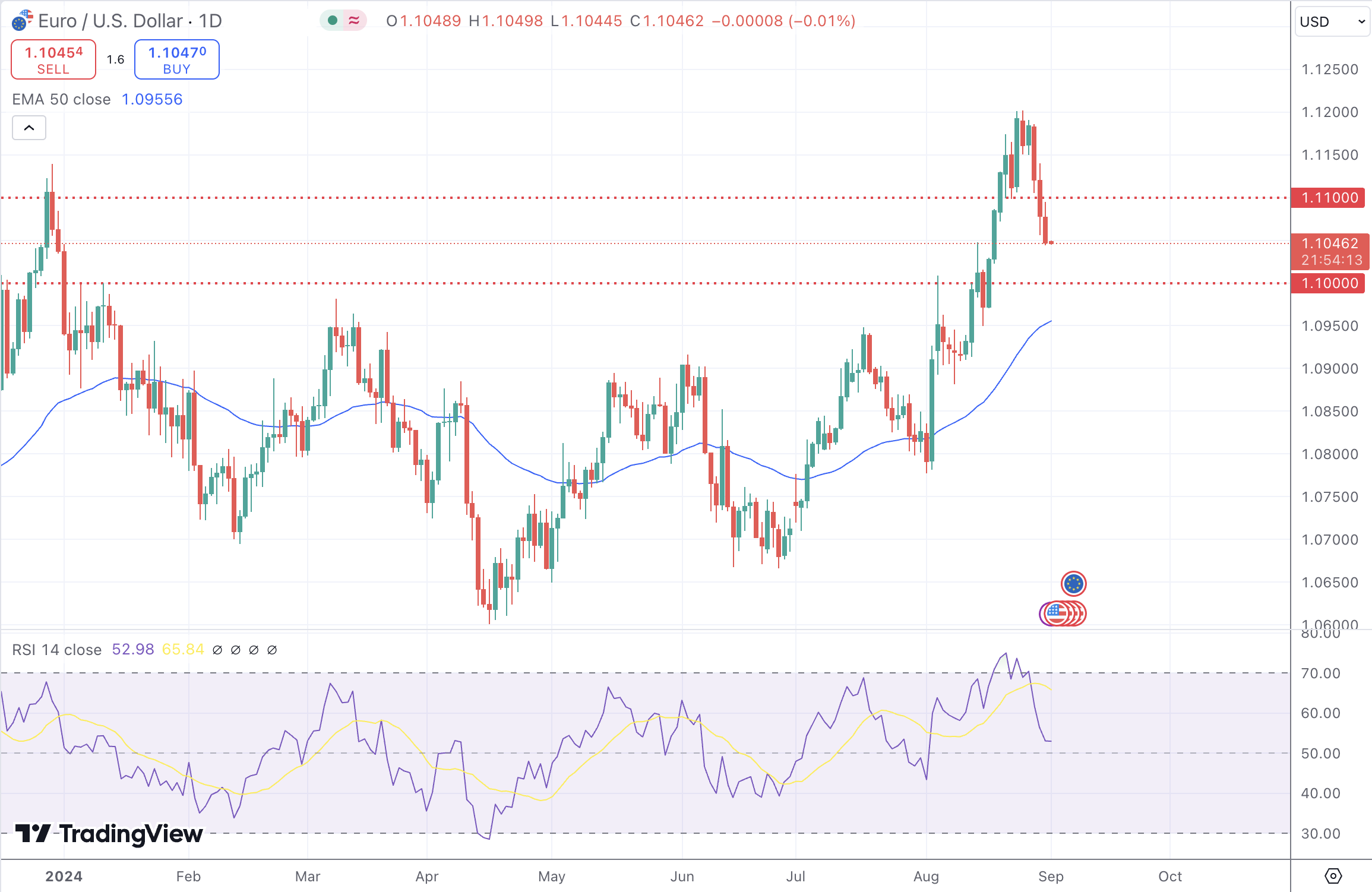Key Takeaways
- The U.S. Dollar has strengthened due to robust economic data, particularly in personal income, which has reinforced expectations of a continued hawkish stance from the Fed.
- The EUR/USD pair has struggled to maintain its position above key resistance levels, with 1.1100 now acting as a critical barrier.
- Diverging economic outlooks between the U.S. and Eurozone are exerting downward pressure on the Euro, with the U.S. economy showing greater resilience.
- The upcoming U.S. Nonfarm Payrolls report and any new insights from the ECB will be pivotal in determining the next moves for the EUR/USD pair.
Market Dynamics and Recent Performance
The EUR/USD pair has experienced notable volatility over the past week, primarily driven by a strengthening U.S. Dollar. The Dollar’s resurgence comes on the back of stronger-than-expected U.S. economic data, particularly in personal income figures, which exceeded market expectations. This data has reinforced the view that the Federal Reserve may maintain a hawkish stance longer than previously anticipated, leading to a broad-based recovery in the Dollar.
The Euro, on the other hand, has faced pressure as it struggled to maintain its position against the Dollar. The pair’s downward trajectory began mid-week, with a significant pullback from the 1.1140 level, a key resistance area that failed to hold. This decline was further compounded by the Dollar Index (DXY) breaking above the crucial 101.13 level, signaling renewed strength for the Dollar and putting additional pressure on the Euro.
Technical and Fundamental Influences
Technically, the EUR/USD pair has entered a critical phase, as it remains below the 1.1100 level, a significant psychological barrier. The pair’s inability to reclaim this level suggests that further losses could be on the horizon, particularly if the Dollar continues its upward momentum. Support for the Euro is currently observed around the 1.1000 level, with any breach below this point potentially opening the door to deeper corrections.
Fundamentally, the divergence between the economic outlooks of the U.S. and Eurozone continues to play a pivotal role in driving the pair’s performance. The U.S. economy has shown resilience, bolstered by robust income data and stable economic growth, which has kept the Fed on a path of cautious optimism. In contrast, the Eurozone is grappling with slower economic recovery and persistent inflation concerns, particularly in key economies like Germany. This economic divergence is likely to continue exerting downward pressure on the Euro.
Looking Forward
Looking ahead, the EUR/USD pair’s trajectory will be closely tied to the outcome of the upcoming U.S. Nonfarm Payrolls report. A stronger-than-expected jobs report could further bolster the Dollar, pushing the EUR/USD pair below its current support levels and potentially triggering a more significant sell-off. On the other hand, any signs of weakness in the U.S. labor market could provide some relief for the Euro, although the overall trend still favors the Dollar.
In addition, market participants will be watching for any developments from the European Central Bank (ECB) regarding its monetary policy stance. With inflationary pressures remaining a concern, the ECB’s response will be critical in determining the Euro’s short-term prospects. However, unless the Eurozone economy shows signs of significant improvement, the Euro is likely to remain under pressure.


